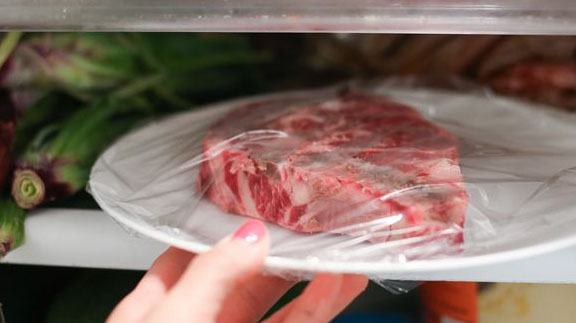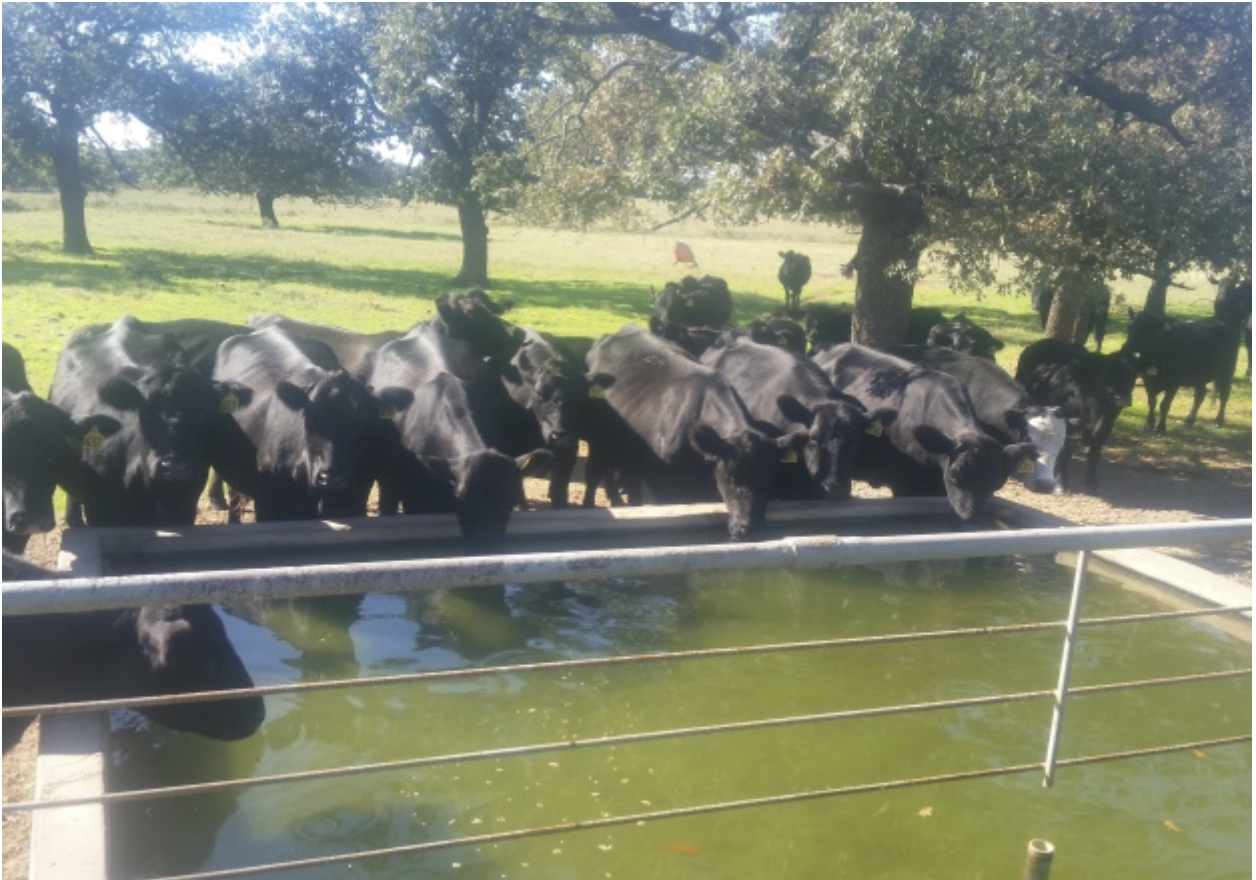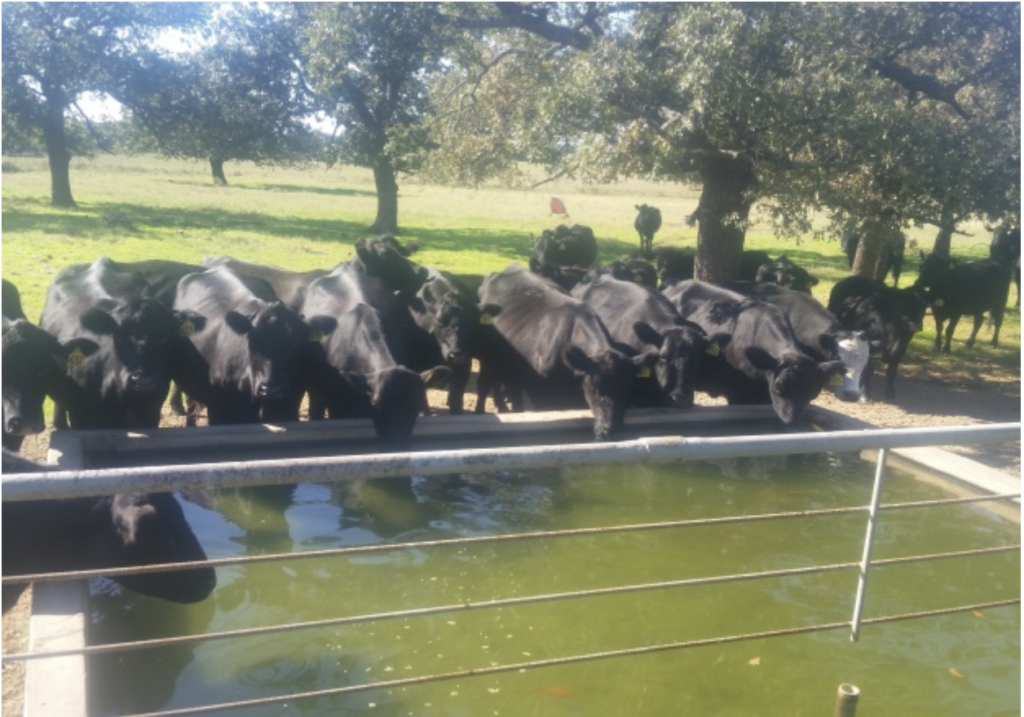Country Lifestyles
[AgriLife Today] Expert: Spring right time to ‘chill-out’ with food safety

By: Paul Schattenberg
Make cleaning fridge part of spring cleaning ritual
KERRVILLE – As the “home” for raw and cooked foods, the refrigerator is both a useful and vital appliance that must be kept clean to reduce the risk of foodborne illness, said a Texas A&M AgriLife Extension Service expert.
With spring just around the corner, now is the perfect time to be thinking about cleaning the refrigerator and making it as safe as possible for food storage, said Rebecca Dittmar, Agrilife Extension program food safety management specialist based in Kerrville.
A National Sanitation Foundation study in which microbiologists measured levels of yeast, mold, staph and coliform bacteria — the family that includes salmonella and E coli – determined the kitchen was the “germiest” room in the house. It was also the room with the most coliform bacteria.
“Bacteria was found on multiple surfaces, including sponges, sinks, countertops and cutting boards,” Dittmar said. “This really drives home the need to keep kitchen surfaces, including refrigerator surfaces, as free from bacteria as possible,” Dittmar said.
But cleaning the fridge isn’t as simple as cleaning other areas of the kitchen, she noted.
“First of all, harsh chemicals and disinfectants like bleach shouldn’t be used to clean surfaces where you will be putting food,” she said. “Disinfectants that come into contact with food could make you sick due to the strong chemicals they contain. It’s best to use hot, soapy water to clean the refrigerator — or use specially formulated products or natural cleaners.”
According to the U.S. Department of Agriculture’s Food Safety and Inspection Service, the two families of bacteria that can be found in refrigerators are pathogenic bacteria, which cause foodborne illness, and spoilage bacteria, which cause foods to deteriorate and develop unpleasant odors, tastes, and textures.
“This is a good time to use or throw away foods that are close to reaching their expiration date or spoiling,” she said. “Obviously, before cleaning the interior of the fridge you’ll want remove all the food. An empty fridge makes cleaning easier and pretty much eliminates the possibility of contamination.
“Take out all the removable parts, such as shelves and drawers and put these in the sink to soak with warm water and regular dishwashing soap before rinsing and drying. You may want to let any glass or ceramic pieces warm up a bit before putting them in hot water to avoid their cracking or breaking from ‘thermal shock.’”
Dittmar suggested wiping the interior surface area with commercial wipes or dishwashing soap and warm water, working from top to bottom to avoid drips onto clean surfaces.
“Use a dishcloth or a paper towel when cleaning,” she said. “To remove tough stains, mix some baking soda with water to make a paste and apply it to the stain and let it sit for a while before scrubbing and wiping it off. For thick or sticky spills, you may want to put a warm, wet cloth over the spill for a few minutes to soften them and make them easier to remove. If you used the dishcloth to wipe up raw meat or juices, wash it or replace it immediately with a clean one.”
She said while cleaning pay particular attention to any corners, cracks and crevices where spills and small particles of food typically collect, and remember to wipe down interior doors.
“Once the interior is clean, it’s time to put the food back into the refrigerator,” Dittmar said. “Make sure the interior temperature is set to keep foods below 40 degrees Fahrenheit. Once the fridge is clean, commit to take extra measures to keep it that way. Regularly look for hidden spills and wipe up any new spills immediately. Remove any foods that produce lingering odors, and to keep the fridge smelling fresh, put an open box of baking soda on one of the shelves.”
She said this is also a good time to start developing the habit of each week throwing out perishable foods that should no longer be eaten.
“A general rule of thumb for refrigerator storage for cooked leftovers is four days,” she said. “If food is past its ‘use by’ date, it’s usually best to discard it. If you’re not sure or if the food looks questionable, the maxim ‘When in doubt, throw it out’ is a good way to go.”
For more specific guidelines for the length of time certain foods should be kept in a refrigerator, go to http://www.fsis.usda.gov/shared/PDF/Refrigeration_and_Food_Safety.pdf .
Dittmar said any food that looks or smells suspicious should be thrown out, and items such as ketchup and mayonnaise should be refrigerated after opening.
She also said raw meat, poultry and seafood should be kept in a sealed container or securely wrapped so their juices do not contaminate other foods. She said large amounts of foods such as stews or soups should be divided into smaller portions and put in containers for refrigeration, and the same for large portions of meat or poultry.
“When you’re returning foods to the fridge, this is also a good time to wipe any crust or sticky residue off jars or containers and dry them,” she said. “Food in the refrigerator should be covered to retain moisture and prevent it from picking up odors from other foods. And eggs should not be stored on the door of the fridge, but rather in their carton and on a shelf, as the door temperature is less consistent.”
-30-
LikeTweet
Find more stories, photos, videos and audio at http://today.agrilife.org
Country Lifestyles
Wichita Falls Area Cattlewomen

By: Martha Crump
Most cattle producers can tell you quite a lot about balancing cattle diets for energy, protein, vitamins, and minerals based on the specific needs for their herd and type of operation.
A key factor, and one that is often overlooked, is that how your animals perform is also directly affected by their water intake.
Now many of you may already be thinking “well of course water is necessary, anybody knows that!”
In many years, as September marches into October, we are beginning to experience some return of rainfall. But as many of us know, that is not always the case. Often we are still experiencing hot and dry weather, and water supplies are dwindling.
When we find ourselves experiencing those types of fall conditions, it is critical to not only understand the daily water requirements for cattle, but also the impact that the quality of water can have on herd health and development.
To read more, pick up a copy of the October edition of North Texas Farm & Ranch magazine, available digitally and in print. To subscribe by mail, call 940-872-5922.

Country Lifestyles
When A Girl Goes Country: When Two Different Worlds Collide

By: Annette Bridges
A friend and I were recently talking about our husbands. She made a comment that I felt also perfectly described me and my hubby.
“He slows me and I hurry him. I’m sure that is why we do well together,” she said.
“Precisely!” I thought. Why?
Because when two different worlds collide, it can be magical.
No matter what those two different worlds are- a man and a woman with very different personalities, beliefs, or backgrounds, two partners with contrasting passions, strengths, or talents, or when a country boy marries a city girl.
To read more, pick up a copy of the October edition of North Texas Farm & Ranch magazine, available digitally and in print. To subscribe by mail, call 940-872-5922.

Country Lifestyles
Emma Harvey- Miss USA Agriculture

Watauga, Texas, a suburb of Fort Worth, is known for its rich history as a railroad stop, but over the course of the last year, one teen girl has put it on the map for agriculture as well. Emma Harvey has lived in Tarrant County her entire life. Despite being highly involved in her local 4-H chapter, she still felt there was more she could do. In the spring of 2023, she stepped up to the plate to take over the title of Tarrant County Teen Miss Agriculture USA.
“It all started when I put in an application for the teen title here in Tarrant County,” explained Harvey.
The Miss Agriculture USA program is a national non-profit, age-inclusive pageant program that offers both competition and non-competition titles to women dedicated to the promotion of agriculture.
Read more in the October issue of North Texas Farm & Ranch magazine, available online and in print. Subscribe to our newsletter to receive NTFR in your inbox each week.

Photo by Hannah Claxton.
-

 Country Lifestyles2 years ago
Country Lifestyles2 years agoScott & Stacey Schumacher: A Growth Mindset
-

 Country Lifestyles8 years ago
Country Lifestyles8 years agoStyle Your Profile – What your style cowboy hat says about you and new trends in 2017
-

 HOME8 years ago
HOME8 years agoGrazing North Texas – Wilman Lovegrass
-

 Outdoor10 years ago
Outdoor10 years agoButtercup or Primrose?
-

 Country Lifestyles9 years ago
Country Lifestyles9 years agoJune 2016 Profile – The man behind the mic: Bob Tallman
-

 Country Lifestyles8 years ago
Country Lifestyles8 years agoDecember 2016 Profile, Rusty Riddle – The Riddle Way
-

 Country Lifestyles5 years ago
Country Lifestyles5 years agoAmber Crawford, Breakaway Roper
-

 Equine2 years ago
Equine2 years agoThe Will to Win




